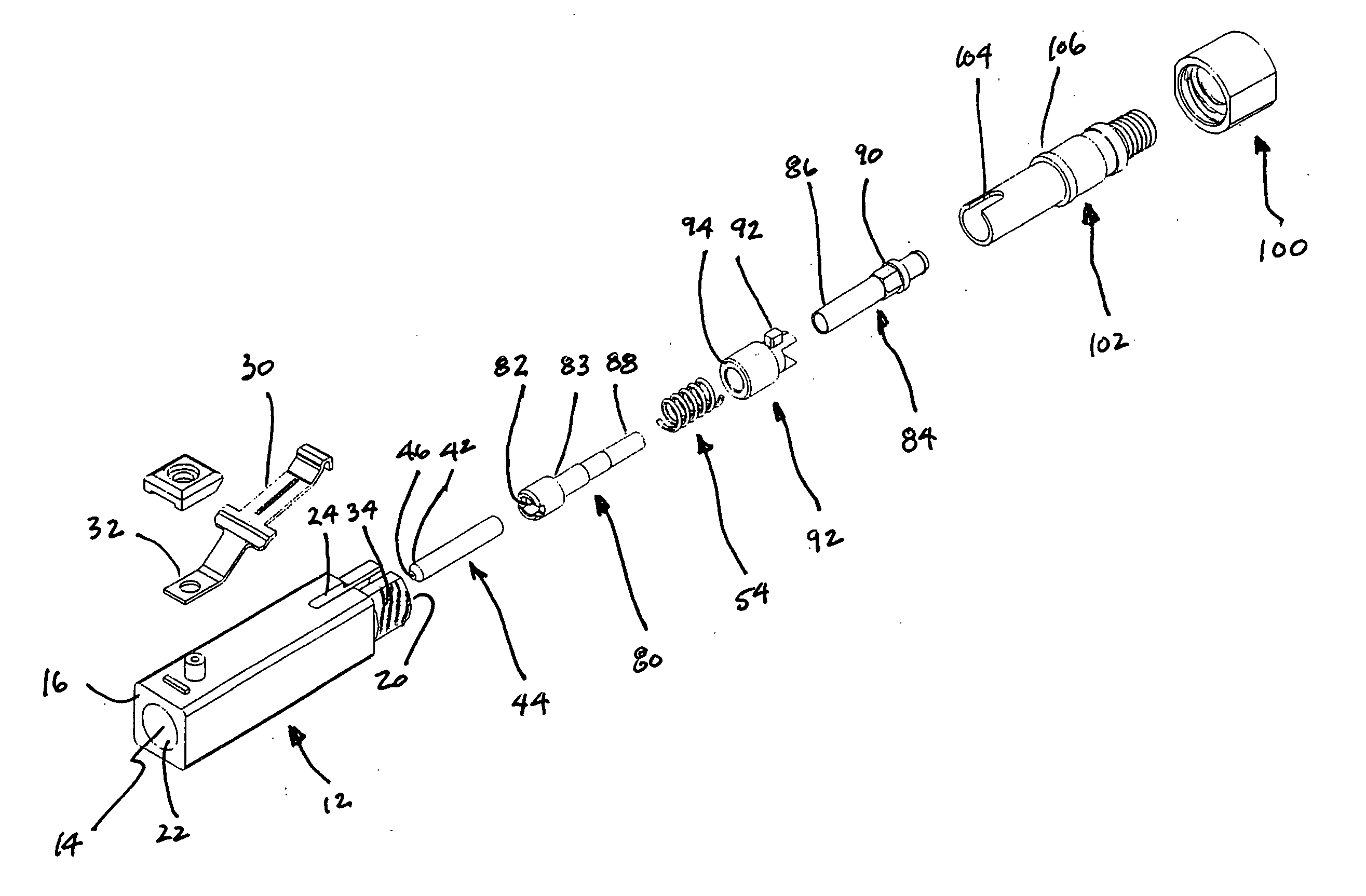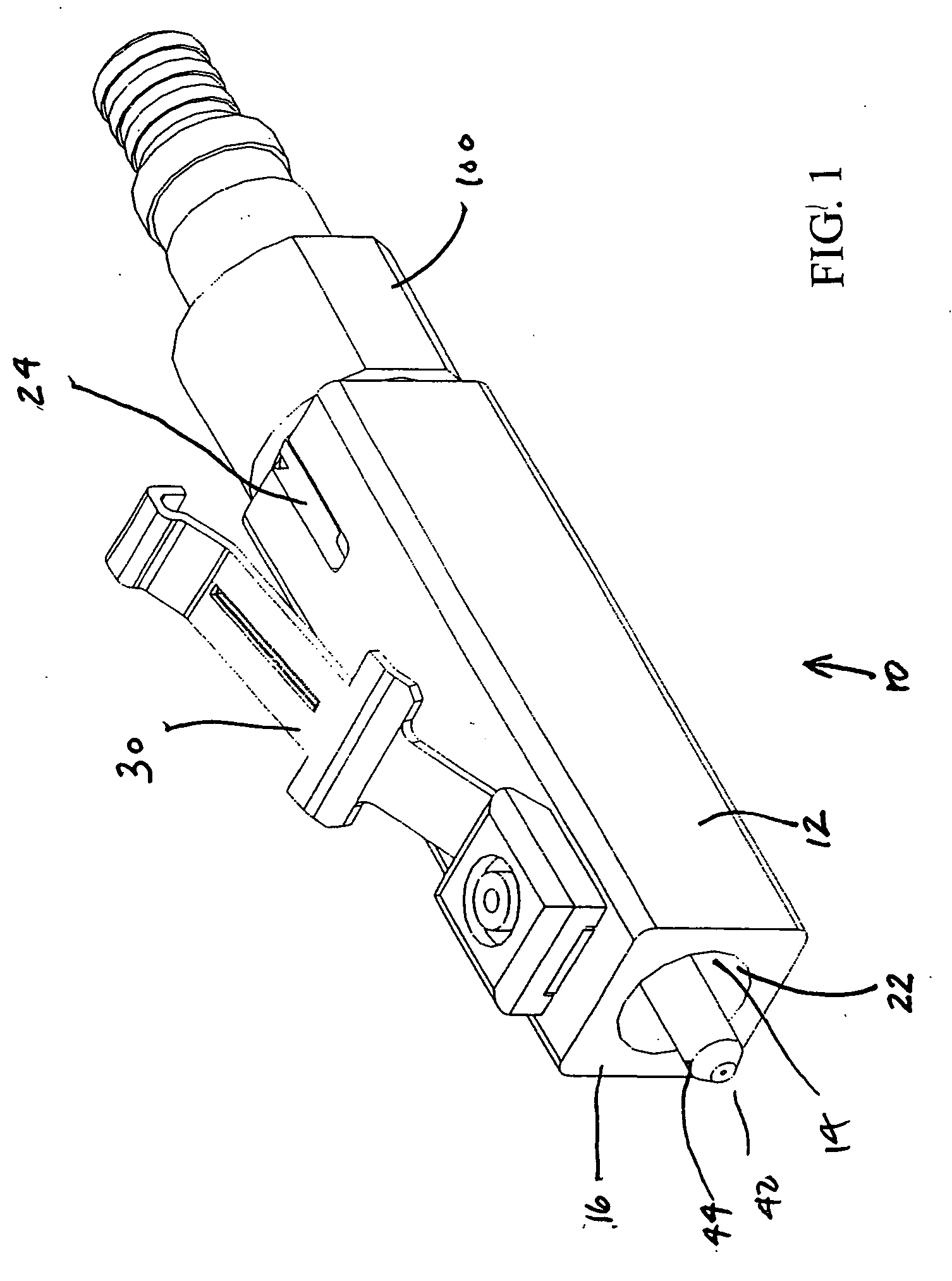Indexed optical fiber connector
a technology of optical fiber connectors and optical fibers, applied in the field of indexed optical fiber connectors, can solve the problems of not being able to determine the exact positional relationship, and none of the available connector systems identified can be completely disassembled and retained, so as to improve precision, reduce manufacturing costs, and improve the effect of precision
- Summary
- Abstract
- Description
- Claims
- Application Information
AI Technical Summary
Benefits of technology
Problems solved by technology
Method used
Image
Examples
Embodiment Construction
[0025] The organization and manner of the structure and operation of the invention, together with further objects and advantages thereof, may best be understood by reference to the following description taken in connection with the accompanying drawings wherein like reference numerals identify like elements in which:
[0026] The present invention enables fiber eccentricity to be compensated through the use of an indexing feature or portion 90 in the fiber holder structure 50. The fiber holder is designed such that the ferrule 44 can be configured with one of six (hex) rotational positions relative to the indexing portion 90 although more or fewer rotational positions may be used. Such a design enables the ferrule 44 and the fiber holder 50 to be installed in connector body with an index in one of six rotational positions (0 degrees, 60 degrees, 120 degrees, 180 degrees, 240 degrees, and 300 degrees). The particular position selected is determined during fabrication of the connector b...
PUM
 Login to View More
Login to View More Abstract
Description
Claims
Application Information
 Login to View More
Login to View More - R&D
- Intellectual Property
- Life Sciences
- Materials
- Tech Scout
- Unparalleled Data Quality
- Higher Quality Content
- 60% Fewer Hallucinations
Browse by: Latest US Patents, China's latest patents, Technical Efficacy Thesaurus, Application Domain, Technology Topic, Popular Technical Reports.
© 2025 PatSnap. All rights reserved.Legal|Privacy policy|Modern Slavery Act Transparency Statement|Sitemap|About US| Contact US: help@patsnap.com



